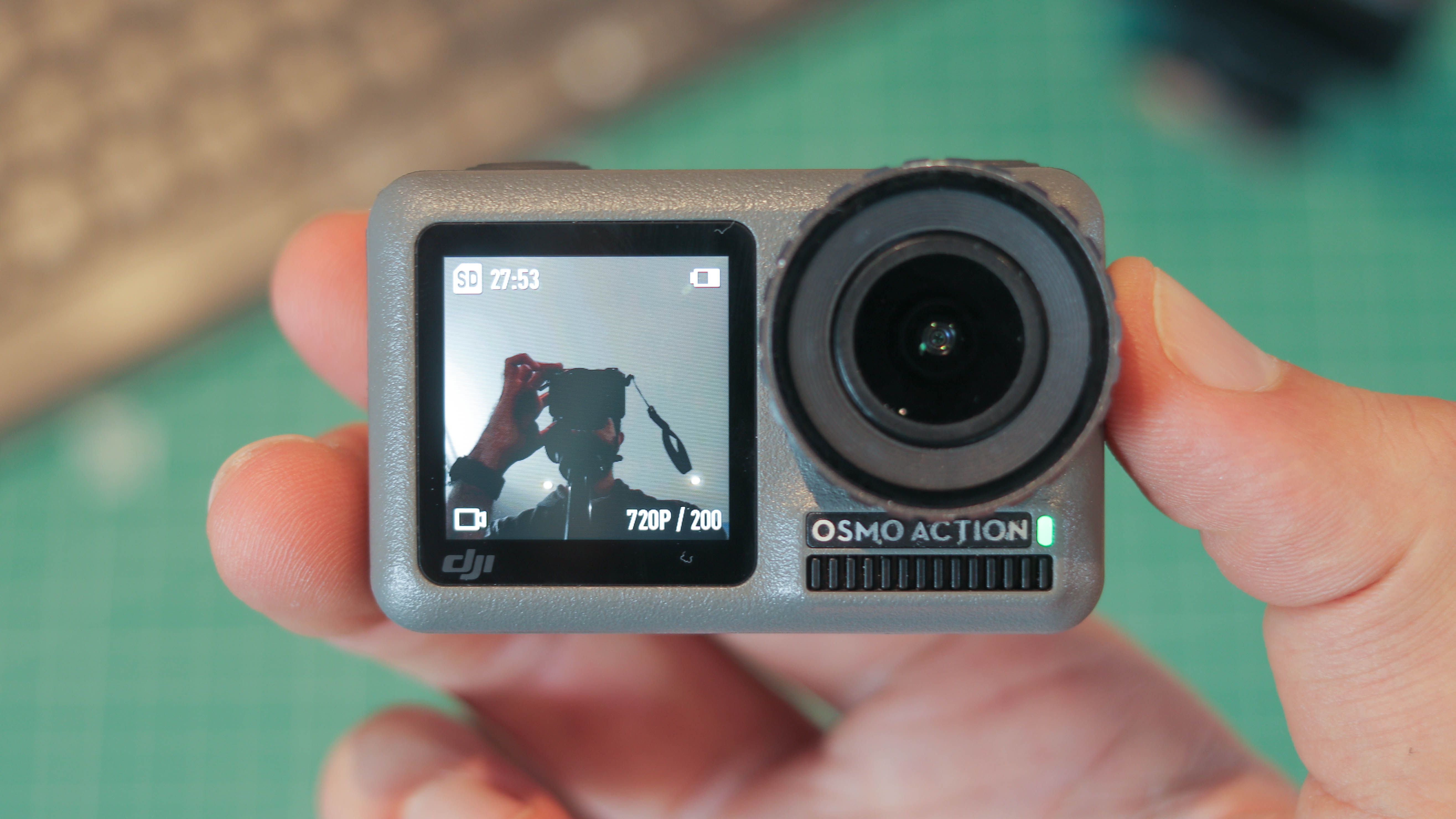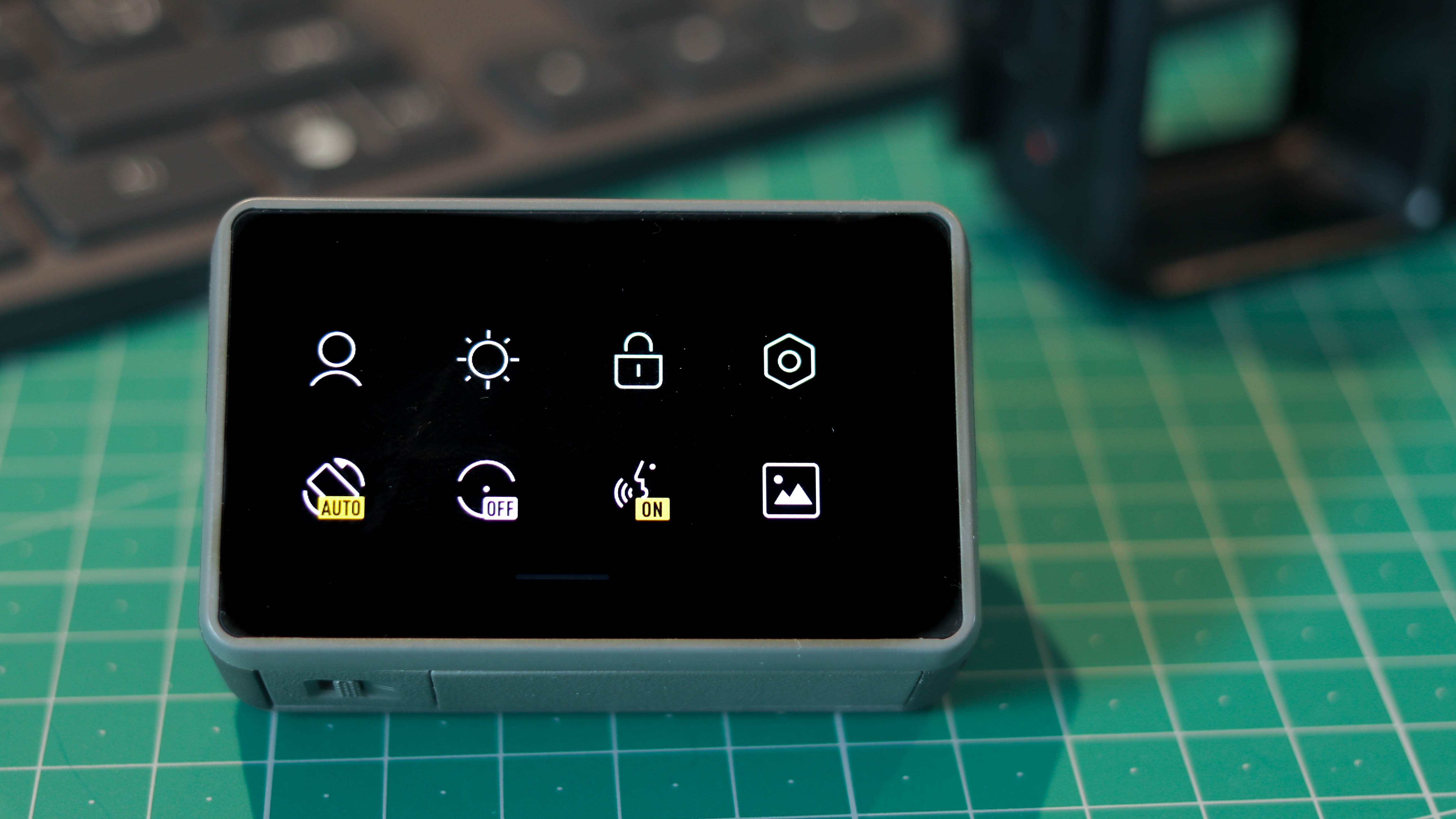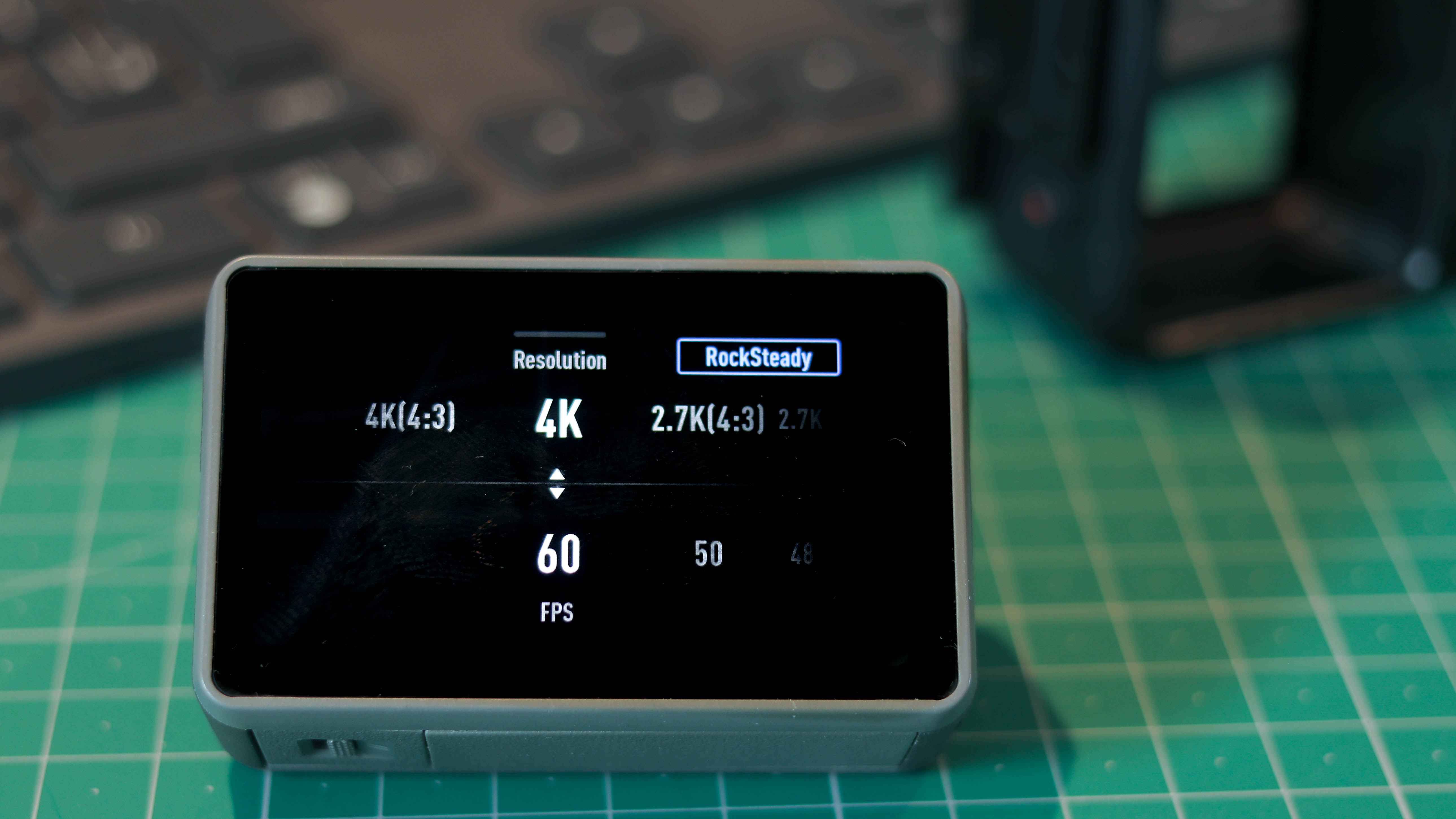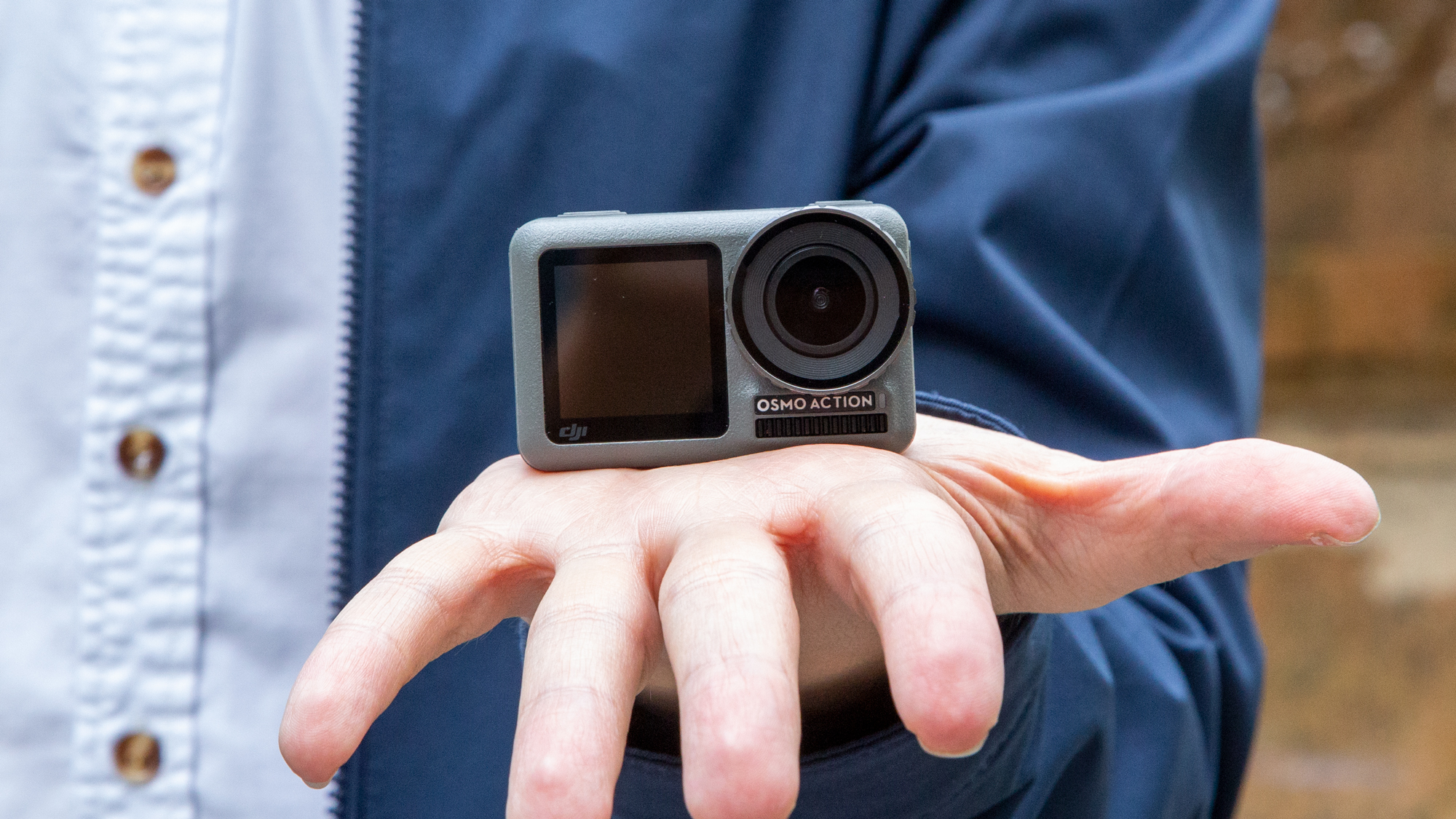Why you can trust TechRadar
Picture quality
Video quality of footage captured on the Osmo Action is both crisp and slick, taking on the GoPro Hero7 and 8 head-on.
Its image stabilization, called RockSteady, may not be as held-together as the Hero8’s Boosted HyperSmooth 2.0, which applies an aggressive crop factor, but it’s in the same league as both GoPros’ default stabilization, juddering with heavy impact while keeping standard shake looking nice and clean.
Where the Osmo Action falls behind on this front is 4:3 video; if you’re looking to shoot 4:3 4K or 2.7K and want RockSteady stabilization, you’re out of luck as it caps out at 16:9 60fps at those resolutions.
On the subject of resolutions, the Action shoots up to 4K 4:3 at 30fps, or 4K 16:9 at 60fps. 720p and 1080p framerates climb up to 240fps, though RockSteady caps out at 60fps irrespective of resolution. As for photos, they’re captured at 12MP.
In the settings, you can set the Osmo Action to prioritize exposing for faces, which is recommended for vloggers. Additionally, you can choose between two color profiles, normal and D-Cinelike, which is flatter, grabs broader dynamic range and is better suited when capturing footage that you plan on editing. In turn, while the GoPros shoot flatter, more cinematic footage by default, the Osmo Action offers some flex on this front.
Excellent lighting results in excellent video across resolutions, with plenty of detail throughout the scene. You can keep that fisheye ultra-wide look, or de-warp your image in the settings, reducing the angle of view, which at its widest is around 148 degrees. Dynamic range can be expanded with HDR mode, which works in the most challenging conditions. While when the Osmo Action first launched, it pulled up occasional ghosting when shooting HDR video, this appears to have been corrected for in recent firmware updates.
Additionally, the Osmo Action can now capture Hyperlapse video, which it couldn’t at launch, and even if this can’t stack up to GoPro’s Timewarp 2.0, it’s a welcome feature.
The main area the Osmo Action struggles is low light capture, which is a challenge for all action cams. When taking photographs, long exposures can help here, but if it’s a toss-up between shooting video on your Action or smartphone when the lights drop, you’d be wise to use your phone.

Interface
Running with a bespoke touch UI, the Osmo Action is easy to get to grips with. Power it on and you’re straight in there with a viewfinder and ready to shoot with the touch of a button. Swipe down from the top, and the first item on the menu is an incredibly handy custom profile maker. The pull-down menu is also where you control brightness, lock the screen, access more settings, toggle auto-rotate, spot metering, voice control and toggle whether or not the front-screen shows a cropped image at 4:3 or a letterboxed one at 16:9.

Back to the viewfinder, and a swipe in from the left pulls up your gallery, complete with filters so you can drill down into a specific type of video or photo captured. Pull in from the right of the viewfinder to access deep controls over your photos or video - dewarp, change color profile, etc, and swipe up from the bottom to set your frame rate and resolution.

You can also tell it what to do by activating voice controls for basic tasks like recording, shutting down or switching screens, and in the settings, there’s an option to toggle the shooting modes that appear when you press the Quick Switch physical button. Between this feature and Custom Profiles, you can have whatever more you need be just a click or two away.
DJI Mimo app
When the Osmo Action first launched, the worst thing about it was the fact the DJI Mimo app just wouldn’t work reliably, especially if you were trying to pair it with an Android device. Fast-forward to October 2019, and everything works great. It pairs every time so your smartphone acts as a big-screened viewfinder for your camera, and gives you control over modes and settings.
In fact, we’d go so far as to say that the app adds a whole new layer of complexity to the Action, with the manual photography controls and RAW shooting capabilities being both easier to manipulate and more enjoyable to use, with advanced features like exposure-peaking available only available through the app.
You can also download your footage directly to your phone from the camera over the Mimo application, and given the fact it uses WiFi, it’s relatively speedy - a 1-minute 4K 30fps HDR clip (723MB) took about 1-minute and 30 seconds.
What’s also great is that DJI now has its three most accessible devices, the Osmo Mobile, Action and Pocket, connecting to just one app upping the appeal if you’re invested in DJI’s ecosystem.
Current page: Picture quality & interface
Prev Page Introduction & design Next Page Battery life & verdictBasil Kronfli is the Head of content at Make Honey and freelance technology journalist. He is an experienced writer and producer and is skilled in video production, and runs the technology YouTube channel TechEdit.

